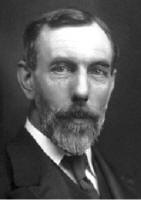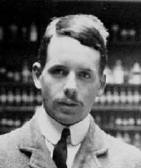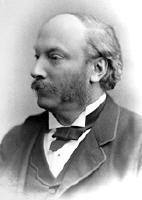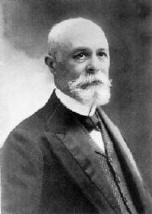|

Sir William Ramsey

Henry Moseley
|
|

Lord Rayleigh
|
In 1895 Lord
Rayleigh (John W. Strutt) (1842-1919) was co-discoverer with Sir
William Ramsey (1852-1916) of a new gaseous element called argon.
Argon did not fit into the periodic chart because it chemically
did not react with other elements. Sir Ramsey discovered the remaining
“Noble Gases” including neon, krypton, and xenon.
He also isolated helium in the Earth’s atmosphere. He was awarded the
Nobel Prize in chemistry (1904) for the discovery of inert gases and how
they fit in the periodic table.
Ernest
Rutherford, a renowned nuclear physicist working on charged particles in the early
1900’s. Building on Rutherford’s work, A. van den Broek in 1911 proposed that the atomic weight
of an element was basically equal to the charge on an atom. This was
later given the name of the “atomic number.” Then Henry
Moseley (1887-1915), a British physicist developed a way to use
x-rays to study the atomic structure. In 1913 he discovered a
relationship of the x-ray’s wavelengths with the number of protons. He
also recognized that the atomic number (number of protons) was
more reliable in ordering the elements in the periodic tables. He
arranged the new table with increasing atomic number, which allowed a
more predictive quality of the periodic table than ranking them by
atomic weight.

Antoine Becquerel |
Antoine Henri Becquerel
(1852-1908), using x-rays developed by Wilhelm Conrad Roentgen
(1845-1923), discovered radioactivity in 1896.
Using some uranium Becquerel noticed that there was
a spontaneous emission of
radiation, which he concluded must consist of charged particles.
Experiments with charged particles allowed scientists to design research
projects that began the intellectual journey to determine how elements
work. |